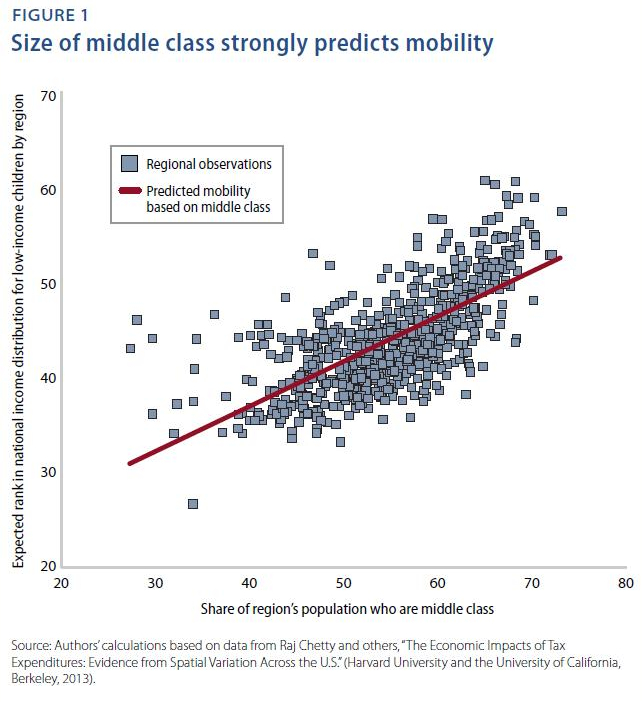September 19, 2013
In early September the Center for American Progress (CAP) released a report that found areas with large middle classes experience considerably more economic mobility than areas with small middle classes.
Using regional data assembled for a study prepared by Raj Chetty and others, CAP authors Ben Olinsky and Sasha Post found the size of an area’s middle class to be the most important determinant of economic mobility: “For every percentage-point increase in the share of a region’s population who fall between the 25th percentile and the 75th percentile of the national household income distribution, children who begin at the 25th percentile of the income distribution will climb up nearly half a percentile.”

Source: Ben Olinsky and Sasha Post, “Middle-Out Mobility”
On average, more than 4 in 10 children born into low-income families maintain the same economic status for the rest of their lives. The same is true for kids born into upper-income families; nearly 4 in 10 children remain in the upper-income division.
However, a large middle class can help break down these class barriers and promote greater economic equality. Olinsky and Post argue that areas with a large middle class typically have better schools and other mechanisms that assist low-income kids in rising to the top.






